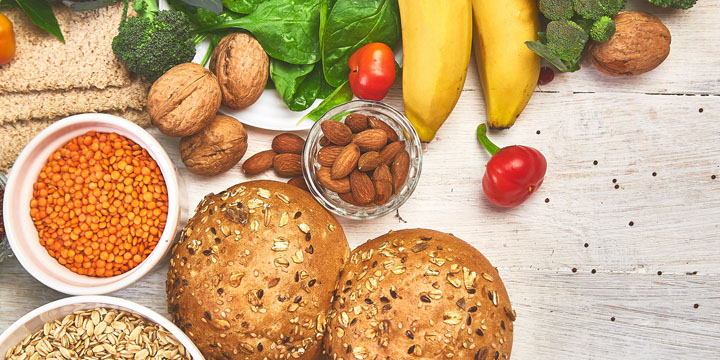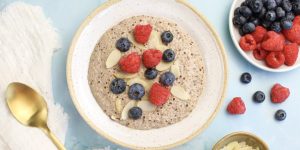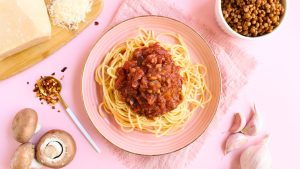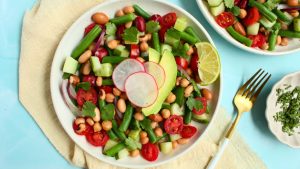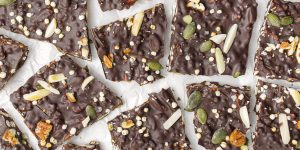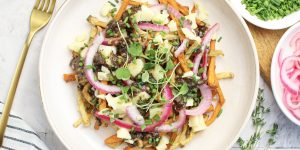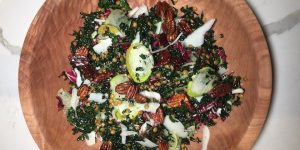Fibre is a part of food that is not broken down by the body. It has many health benefits and can help you feel full for longer and aid in weight loss.
Why does fibre matter for diabetes management? Fibre-containing foods are digested slowly by the body which can help to stabilize blood sugar levels after a meal.
To know if a food is a high fibre option, the nutrition facts table can be helpful.
- Good sources of fibre contain at least 2g fibre per serving.
- High sources of fibre contain at least 4g fibre per serving.
- Very high sources of fibre contain at least 6g fibre per serving.
There are many high fibre foods that you can incorporate into your diet.
1. Whole grains: Whole grains are known for their fibre content. Whole grain variations of products such as bread and pasta are good options to include in your diet.
Other whole grains to choose more often include quinoa and oats, both of which can be enjoyed in breakfast bowls. Chia seeds are also packed with fibre and can be added to smoothies, yogurt or salads.
Learn more about whole grains.
2. Lentils and Beans: Lentils and beans are great sources of nutrients like protein and fibre. Both lentils and beans are such versatile ingredients and they can be easily added to a dish to boost your fibre intake.
Try lentils in soup, bolognese sauce or as a plant-based filling for tacos. Add beans to chili, salads or even stir frys for an extra source of protein and fibre.
3. Nuts: Nuts contain heart healthy fats and protein. They are also a source of fibre.
Nuts make an easy addition to any meal. Simply toss them into a salad, add them to your pesto sauce or include them in your baked goods. Nuts also make for a diabetes friendly snack.
Learn more about the value of nuts for a diabetes diet
4. Vegetables: Vegetables are loaded with nutrients and you guessed it – fibre. Good options include leafy greens, brussel sprouts, artichoke, sweet potato and rutabaga.
Vegetables are such versatile ingredients that can be prepared in so many ways such as grilling, roasting and baking. If you’re looking to boost your vegetable intake, add them to your breakfast such as having sweet potato toast or add leafy greens and brussel sprouts to your stir frys.
Learn more about navigating the grocery store for vegetables
5. Fruit: Fruits are a great source of fibre, especially options like pears and berries. Eat fruits with the skin on as that is where much of the fibre is found. This fibre is what makes eating a fruit more diabetes friendly than drinking fruit juice, as juice does not contain the fibre.
Enjoy fruits on their own as a snack or add them to a smoothie.
Here are some great higher fibre recipes for you to try:
Cinnamon Quinoa Breakfast Bowl
Bolognese Sauce with Lentils
Mixed Bean Salad
Dark Chocolate Mint Bark with Crunchy Nuts and Seeds
Diabetes-Friendly Poutine with Sweet Potato and Rutabaga
Kale & Lentil Salad with Pear and Roasted Walnuts
For personalized guidance on diet and blood glucose management, speak to a Registered Dietitian.
